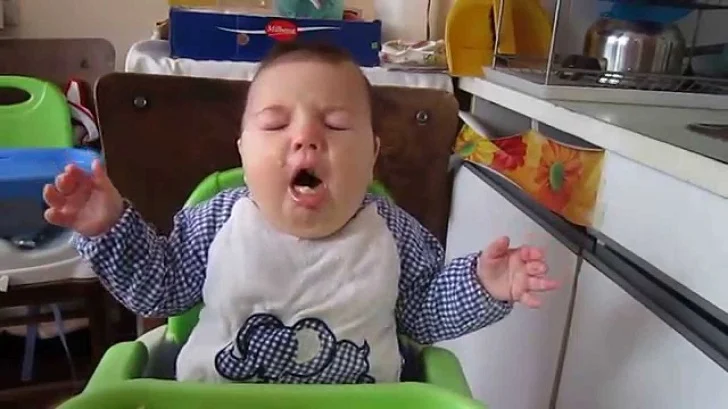This step-by-step guide explains the basics of first aid for choking. These techniques differ depending on the age of the child, and doing them improperly can be harmful. The following instructions are for babies younger than 12 months old.
«» Assess the situation quickly.
If a baby is suddenly unable to cry or cough, something is probably blocking her airway, and you'll need to help her get it out. She may make odd noises or no sound at all while opening her mouth. Her skin may turn bright red or blue.
If he's or she's coughing or gagging, it means her airway is only partially blocked. If that's the case, let her continue to cough. Coughing is the most effective way to dislodge a blockage.
If the baby isn't able to cough up the object, ask someone to call for help while you begin back blows and chest thrusts.
«» Try to dislodge the object with back blows and chest thrusts.
First, do back blows - If a baby is conscious but can't cough, cry, or breathe and you believe something is trapped in his airway, carefully position his face up on one forearm, cradling the back of his head with that hand.
Place the other hand and forearm on his front.
He is now sandwiched between your forearms.
Use your thumb and fingers to hold his jaw and turn him over so that he's facedown along the other forearm.
Lower your arm onto your thigh so that the baby's head is lower than his chest.
Using the heel of your hand, deliver five firm and distinct back blows between the baby's shoulder blades to try to dislodge the object.
Maintain support of his head and neck by firmly holding his jaw between your thumb and forefinger.
Next, place your free hand (the one that had been delivering the back blows) on the back of the baby's head with your arm along his spine.
Carefully turn him over while keeping your other hand and forearm on his front.
Then do chest thrusts.
Use your thumb and fingers to hold his jaw while sandwiching him between your forearms to support his head and neck.
Lower your arm that is supporting his back onto your opposite thigh, still keeping the baby's head lower than the rest of his body.
Place the pads of two or three fingers in the center of the baby's chest, just below an imaginary line running between his nipples.
To do a chest thrust, push straight down on the chest about 1 1/2 inches.
Then allow the chest to come back to its normal position.
Do five chest thrusts. Keep your fingers in contact with the baby's breastbone.
The chest thrusts should be smooth, not jerky.
Repeat back blows and chest thrusts.
Continue alternating five back blows and five chest thrusts until the object is forced out or the baby starts to cough forcefully, cry, or breathe on his own. If he's coughing, let him try to cough up the object.
If the baby becomes unconscious
If a baby who is choking on something becomes unconscious, you'll need to do what's called modified CPR. Here's how to do modified CPR on a baby:
- Open his mouth and look for an object. If you can see an object, remove it with your little finger.
- Give him two rescue breaths. If the air doesn't go in (you don't see his chest rise), tilt his head and try two rescue breaths again.
- If his chest still doesn't rise, do 30 chest compressions.
- Look in his mouth and remove the object if you see it. Give him two more rescue breaths.
- Repeat the chest compressions and so on, until help arrives.
- We all hope we'll never be put in this position of having to save a baby's life, but it could happen and everyone ought to be ready to save a life because life is precious.
